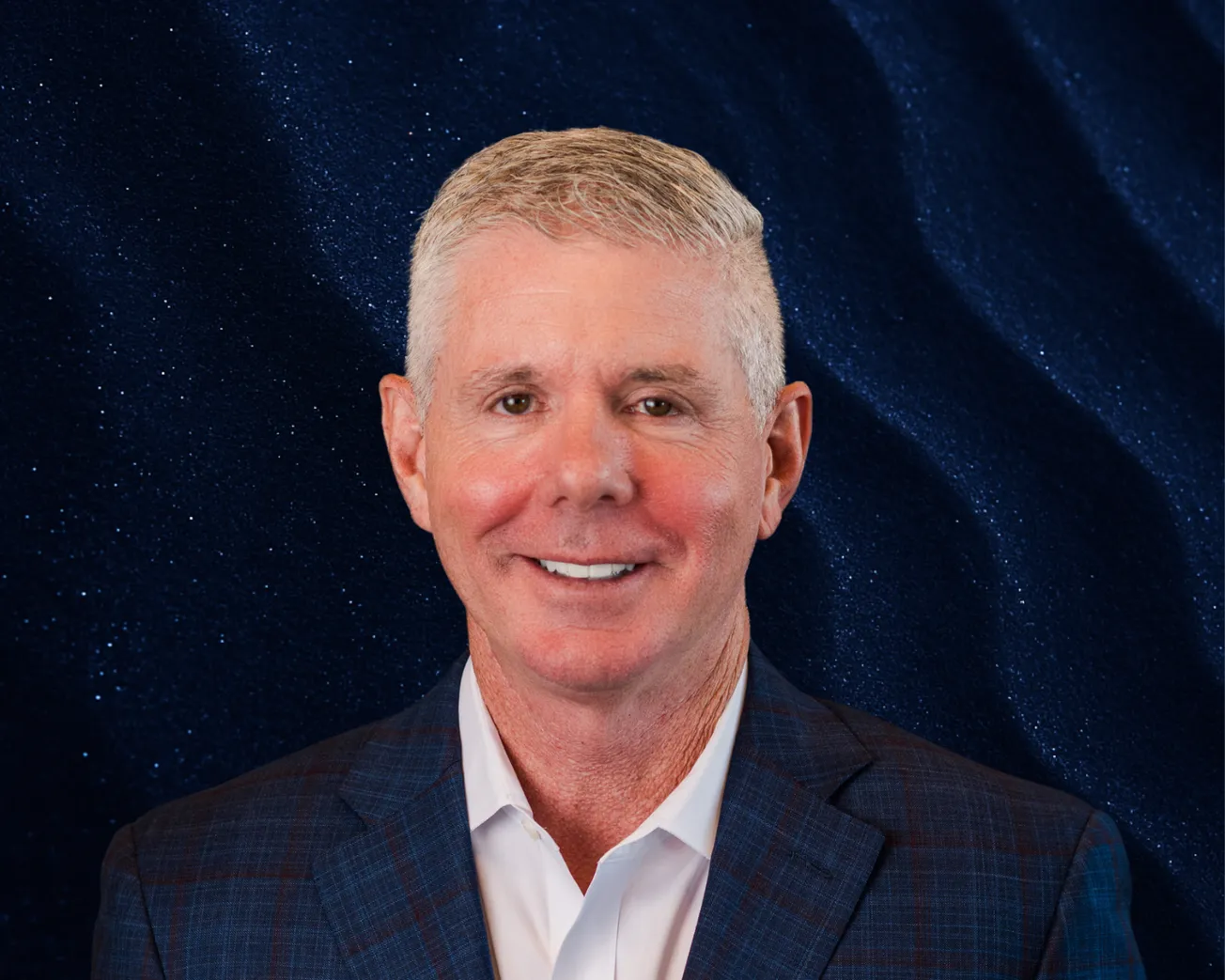Table of Contents
Ed Watson, CEO of Acme Brick, sat down with Onyx for a feature-length interview.
Could you start by giving our readers a quick background summarizing your career journey prior to becoming CEO and President of Acme Brick?
Glad to be here! First of all, I’m a native of a small town in West Texas, called Muleshoe, which is famous for the Muleshoe Mules mascot. I went to Texas Tech University, where I got a degree in Engineering Technology. I started my career with Acme in 1983. Thankfully, I’ve been gainfully employed by the company since that time, so that’s a little over 42 years.
I started out as a plant engineer, and I worked my way up through the ranks. I became a general manager of an operation where we had limestone quarrying and fabrication, then on to managing our concrete block division, for a good part of that period, as well. In 2003, I began getting more involved in the brick side of manufacturing, when my predecessor as VP of production was retiring, so I stepped into that role. I served under Dennis Knautz, who was CEO, until he retired, early in 2023. I became president and CEO on April Fool’s Day, so, at this point, I’ve been in this role for a little over two years.
For almost exactly half my career with Acme Brick, I’ve been in an executive role, going back to 2004.
Looking back over your career, what parts stand out as being the most notable?
I’d say the relationships. We work very hard to make Acme a great place to work, and I’ve developed some really good relationships with our associates, and with our customers too. We’ve got a really strong executive team here in Fort Worth where we’re based.
We also get very engaged on a local and national level - belonging to the chambers of commerce in the cities where we operate; political action at the state level; and on a national level, through the Brick Industry Association. I’m currently chairman of the BIA, which is based in Reston, Virginia. We promote and safeguard the clay brick industry. That’s been a very challenging part of my last couple of years – as we’ve been transitioning with a new CEO - but I’m very pleased with the results we’re getting.
And I’m just proud to be associated with this segment of the building products industry. We do think we are making the best, and most sustainable, product around. So, I’m really excited to share that story with you today!
You’ve seen not just Acme evolve, but the wider U.S. construction industry. How would you describe that change?
We’ve seen a lot of changes with architectural specifications, particularly on the non-residential side. Architects are looking to use different building materials. We still believe that brick is the most durable product that you can put in a building - but we also realize that not everyone wishes to design with full brick masonry.
So, we’ve embraced other materials that also have a durable life cycle. Brick will always be the staple of our business - it’s been our story since 1891 - but as long as we’re aligning ourselves with good, durable products that are sustainable in design, we feel that’s a good opportunity for growth.

In terms of manufacturing, what technological shifts have you seen?
We’ve become much more energy efficient in terms of manufacturing and firing our bricks. For the longest time throughout our history, we used what were called periodic kilns. You’d stack brick by hand inside the kiln; shut the door; fire it to 2,000 degrees; open it up; let it cool down; unload it by hand; and then package it. It was all very manual.
Over the last 50 years, we’ve moved to tunnel kilns, which are continuous and much more efficient. One of the largest advancements has been automation, in terms of utilizing robots to set the green brick, when it’s first manufactured, onto kiln cars; feed it through the dryer; then, ultimately, into the kiln; and robots to unload, at the other end.
At our Bennett plant, which was our very first site in 1891, and is named after our founder, we’ve just added more robots. I just think that’s a great story of evolution - 134 years later, on one piece of property, still going strong with mining shale and brickmaking, and continuing to make those enhancements.
On the macroeconomic side, how have higher interest rates and rising house prices impacted demand for Acme?
It’s really an affordability question. Home buyers, today, are still thinking back to 2020 - 2022, when you could get a two-and-a-half percent 30-year mortgage. That may not be something that we’ll see again anytime soon, if at all! Historically, a five- or six -percent mortgage isn’t a bad rate.
But the question is: Can they commit to making the payments over 30 years? That’s where affordability is a challenge. It’s also been harder for us to pass through some of our own cost increases. So, it pushes us to be as efficient as we possibly can be, with our fuel consumption and delivery optimization - to make it where we can be profitable enough to make sure that we can reinvest in our business and continue to control our destiny as much as possible.
I do think that we’ll see an uptick in homebuilding, here, in the U.S., and we believe it’s just around the corner. Interest rates and inflation certainly are the big factors.
Another big change for every industry has been AI. Has that been a game changer for Acme Brick?
I’d say it’s rather small, at this point, but it’s evolving. We’re constantly looking at opportunities to improve upon some of our more manual processes and ameliorate some of the great analytics that we’ve used in the past, and, by doing so, improve our forecasting – particularly in terms of demand.
We have a monthly meeting of our sales and operations planning team. A lot of senior leaders are involved - looking at feedback from customers; historical trends; bookings; making decisions about plant rates and volumes. That’s where AI has great potential to improve our forecasting!
The challenge is: getting that intel from homebuilders and other customers fed into AI. So, right now, it’s a balance between traditional analytics and using AI to enhance it further.
How important is sustainability in Acme Brick’s workflow?
It’s extremely important. If you can produce a material, like brick, that lasts for a century or more, just look at the life-cycle cost, compared to other lower-cost alternatives. Of course, those may be cheaper up front, but then you have to repaint, repair and maintain them over time.
We believe we have the most sustainable building material. And we back it up: our residential brick comes with a limited 100-year guarantee. There aren’t many building materials available on the market where you will see that being offered!
Inside the plants, we’re always improving efficiency, but, really, that life cycle cost is the story. If I were choosing a material for my home or business, I’d look at something that could last for a century.
How does brick compare in terms of recycling and reuse?
We do a lot there. One challenge is mortar sticking to brick, which makes reuse trickier. But we recycle and repurpose. We also grind down off-sized or mis-colored products and feed them back into the body to make new brick.
We’ve also seen a growing demand for repurposed brick. There’s a strong reprocessed and used-brick market. We can take off-shade brick and apply coatings and tumble the product to sell. If somebody wants to take down an old building and reuse the brick on a new project, that can certainly be done. It’s probably not as affordable - but, as I say, green isn’t always the lowest cost either.
Looking ahead ten years, what does the future of Acme Brick look like?
Our future is tied to our past! Brick will always be our staple, but we’re embracing more and more non-brick products. As long as they’re durable, sustainable, and backed by the type of warranty we want to stand behind, we’re comfortable.
So, I think, over the next ten years, we’ll see more of our total sales coming from non-brick. But, at the same time, we’ll continue reinvesting in our plants, helping to sustain them and maintain their volumes. That’s a critical part of our strategy.
If you could go back to the start of your tenure, or even back to when you first joined Acme Brick, what advice would you give yourself?
As I mentioned earlier, relationships are extremely important, whether that’s internally, with our associates, or externally, with our customers. We want them to know we’re standing side by side with them. Whether it’s by supporting them when issues come up, or by providing them with good, durable products, we’re there.
We nurture the relationships that we have on the national level, too, when it comes to being responsible stewards by working with those associations. It really is all about relationships! Whether it’s an associate on the plant floor, the CEO of another business, home builders or architects, those relationships are the key to our success and have been for a very long time. I hope we can sustain that!






